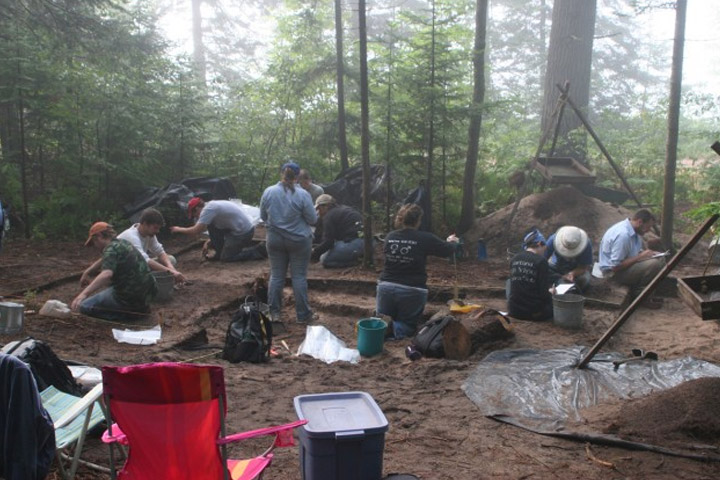Distinguished Professor James Skibo and a team of students will be the first to unearth a new archaeological site in Michigan, which may offer insights into more than 4,000 years of human history.
Skibo will lead the annual Grand Island Archaeological Research Project, a cooperative effort between Illinois State University and the Hiawatha National Forest in Michigan. The project provides an archaeological field camp for Illinois State students to help excavate sites on Grand Island, an eight-mile stretch of land off the coast of northern Michigan that has a history of inhabitants spanning from roughly 2,000 B.C. to present day.
Initiated in 2001, the camp has explored numerous sites along the island’s Murray Bay, but this year will be the first foray onto the west side of the island. “Murray Bay has dozens of archaeological sites including the largest Late Archaic (2,000 B.C) settlements on all of Lake Superior,” said Skibo. “We’re getting an understanding of prehistoric life on Murray Bay. Now it will be interesting to know what the new site will tell us, if these are different people with different lives.”
Skibo’s team will work near Mather Lodge, a sprawling wooden house built by William Mather, a timber and iron ore tycoon who owned the island in the early 1900s. Mather, who allowed little building on the island, cordoned off a large portion of the island as a game preserve. “Mather kept exotic animals on the preserve, and even had a gamekeeper,” said Skibo. “There is only one cottage inside the game preserve, on western side, and it is his house.”
The house and yard sit atop a large woodland area that Skibo notes is a rich archaeological site. The Forest Services is considering opening the lodge up as a museum, and requested Skibo and his team excavate the area. “The Forest Service archaeologists are responsible for managing cultural resources. So if there is any building or construction planned, such as roads or new campgrounds, an assessment has to be made on the impact to the archaeological resources,” said Skibo.
Skibo calls the area “a great place to dig,” despite the challenges the area presents. “The winters there are hard with freezing and thawing, and giant trees that grow there, which can make it difficult for artifacts to remain intact,” he said. Adding to the difficulties is the nature of the original inhabitants. “They were hunters and gatherers. What archaeologists rely on is people throwing things away, and hunters and gatherers are mobile and take a lot of things with them,” said Skibo.
Students participating in the project learn field techniques of archaeology and creating detailed maps of the sites with a Geographical Information System (GIS). “Archeological resources are finite resources—once you dig it up, it’s gone,” said Skibo. “So you have to train students from the first day as you simultaneously collect data. It means you go a little slower than trained archeologists.”
Graduate student Susan Kooiman said she appreciated the time Skibo takes with excavations. Joining the field camp in 2010, Kooiman already had experience with archaeological sites in MesoAmerica and Wisconsin. “Even though I had done archaeological digs before, there were new techniques that Dr. Skibo employs on his sites, such as piece plotting where you immediately map items as you find them, and then using programs later to do special analysis.”
The students will also help lead activities for the Hiawatha National Forest, from working with a youth workshop to giving detailed tours of the site to tourists. “I assign one student every day who jumps out of the hole and leads the public on tours,” said Skibo. “People get a first-hand tour, shown the artifacts, and can see the students’ enthusiasm. We give them a $100 tour, really.”
Skibo said his hopes for this year’s camp are high. “People do not realize there are 200 archaeological sites at Grand Island, and the wealth of information we have gathered, and have yet to gather,” he said. “It’s a pleasure to go back and know that just below the surface, we archaeologists can figure out what life was like.”

